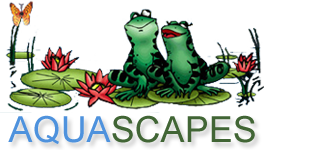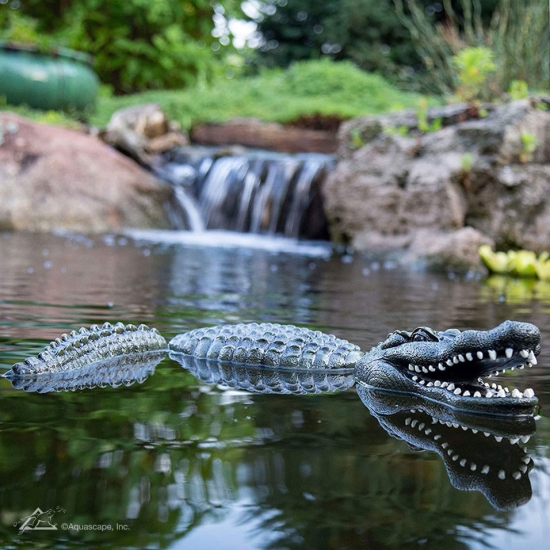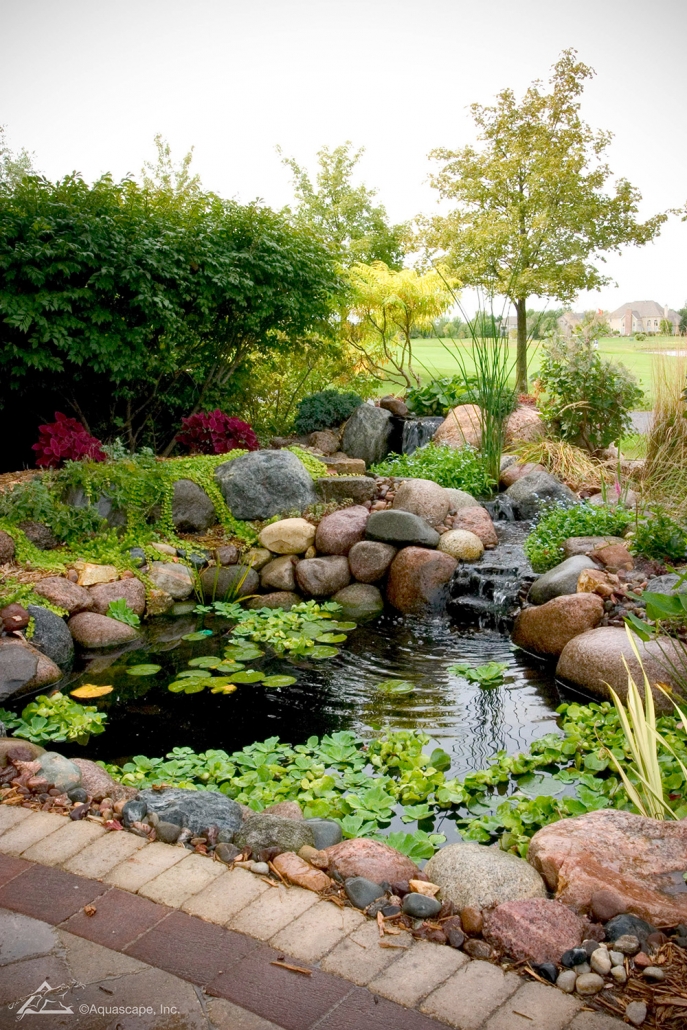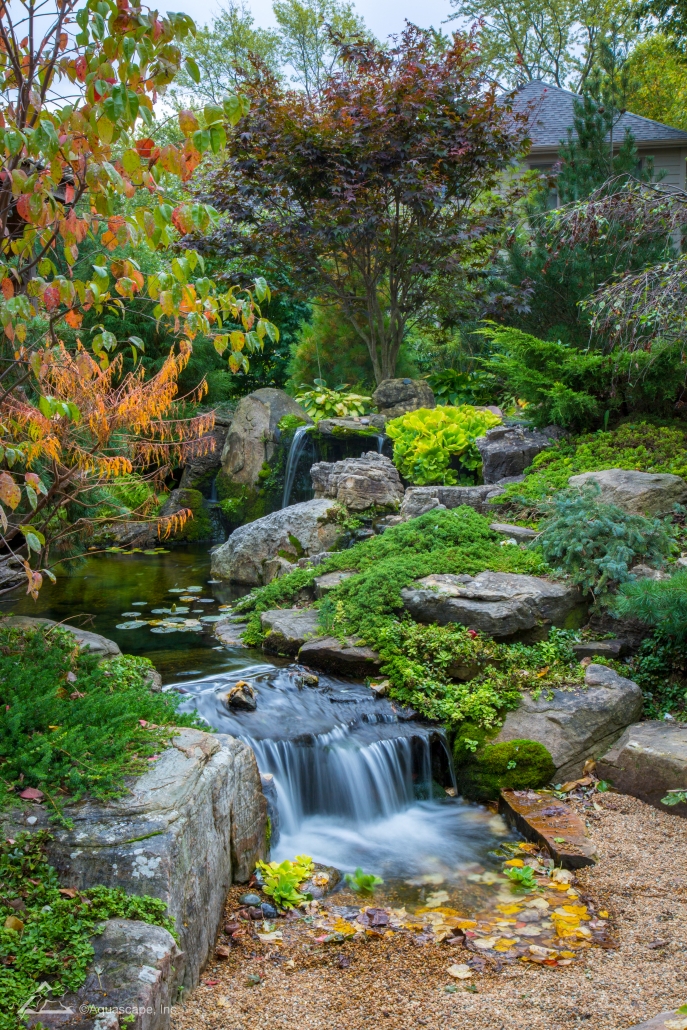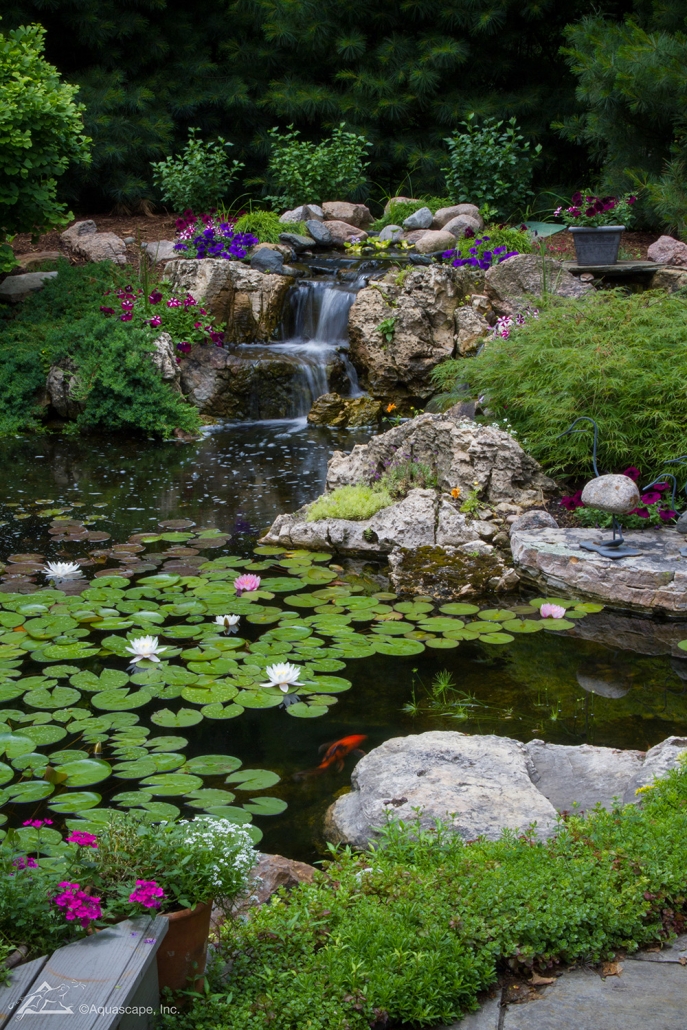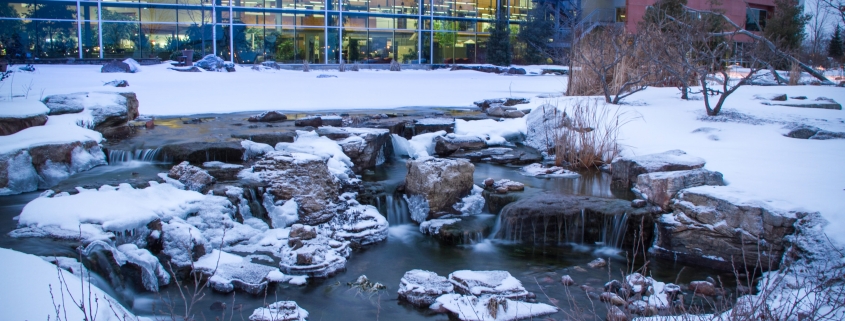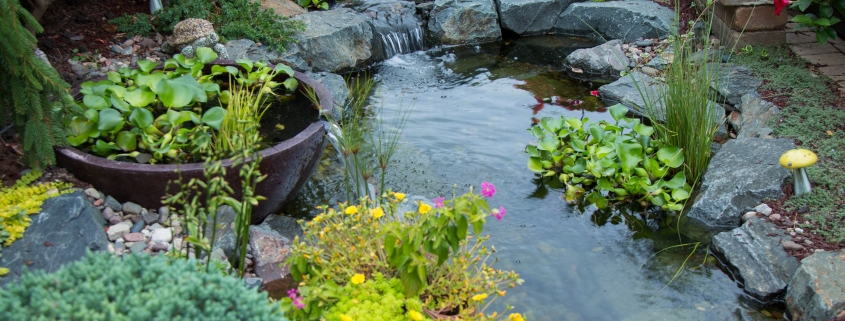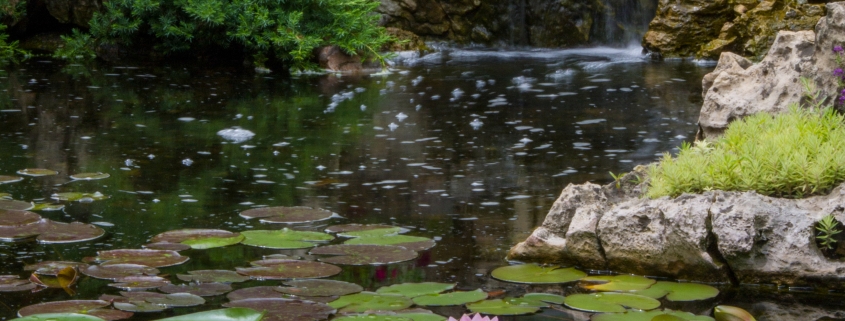How Long Does a Pond Pump Need to Be on Each Day?
A pond pump and a filter are necessary to maintain pond health. A well-maintained pond adds value to a home, and even though a large pond with fish requires more maintenance than a small pond, it is worth the extra effort, providing movement, color and a dramatic landscape element. A pond’s pump should run 24 hours each day to ensure the pond’s water circulates through the filter to keep the water clear.
Pump Function
A pond pump may be submerged in the pond’s water or sit outside the pond, depending on the pump type, but both types work in the same way. The pump uses spinning blades, known as impellers, to pull pond water through a screenlike intake and expel the water through an outlet pipe. Generally, a large pond has an external pump and a smaller pond or water garden has a submersible pump. Any kind of pump requires regular maintenance of its intake filter and screen to prevent clogging.
Pump Size
Before buying a pond pump, calculate your pond’s water capacity to determine the size of pump required to circulate all of the pond’s water through the pump every one to two hours. Formulas can help you determine your pond’s water capacity in gallons from pond measurements taken in feet. The formula for a rectangular pond is length x width x depth x 7.48 = gallons. For a circular pond, the formula is radius x radius x 3.14 x average depth x 7.48 = gallons. The formula for an irregularly shaped pond requires dividing the pond into easier-to-calculate shapes, figuring the water capacity in gallons for each of those shapes and then multiplying the total sum of those gallons by 231 instead of 7.48.
Operating Cost
A pond that has a pump or other electric equipment requires electricity, and so it will increase your monthly electric cost. Some pumps cost less to operate than other pumps. Reduce the cost of pump operation by using a pump that moves the necessary amount of pond water while using the least amount watts; a watt is a measurement of electrical usage. Calculate the cost of operating a pump by using this formula: Divide the watts by 1,000, and then multiply that figure by 24 hours, the number of days per operation and electricity cost. An example is: 300 watts/1000 x 24 hours x 30 days x 0.08 for electricity cost = $17.28 as the cost to run the pump for 30 days.
Other Considerations
Mosquitoes can be a problem when a pond is in the landscape, but mosquitoes lay eggs in only stagnant water. A pump can keep the pond water moving, deterring mosquitoes from laying eggs in the water. Even a small amount of moving water can prevent mosquitoes from laying eggs. So if a pump is not feasible, add a fountain bubbler to keep water moving.
How Many Watts Would a 2.5 HP Pump Use?
A pump helps circulate and filter the water in a pool. A pump’s horsepower determines how quickly the pump can process all the water. The goal is for the pump to sufficiently filter all the water in an 8 to 10 hour period, according to Aquascapes. Depending on the size and volume of your pool, you will need more or less horsepower to filter the water in that ideal time frame. Horsepower can be converted to watts, giving you a guesstimate of what your energy costs might be to run your pump.
Math Conversions
One horsepower is equal to 745.7 watts. When you multiply 745.7 watts by 2.5 hp, you get 1,864.25 watts. Energy costs are calculated in kilowatt-hours, and to get kilowatt-hours, you multiply watts by hours and divide by 1,000. So, if you run your pool pump for 8 hours in one day, 1,864.25 multiplied by 8 and divided by 1,000 equals 14.9 kilowatt-hours. If you run your pump every day for an average of 30 days per month — 30 multiplied by 14.9 — your pump uses 447 kilowatt-hours in a month.
Garden Pond Care in Winter
Appropriate pond care in winter is extremely important. As the winter season now commences in full swing, things in your garden pond come to a halt. The fishes go into hibernation mode. You shut down your pumps and filters. However, the debris that was collected during the pre-winter months continues to decompose releasing gases into the water. These gases also fuel algae growth. Adding to the complexity, a sheet of ice forms over the water trapping the fish and water beneath it. As the oxygen level decreases due to fish consuming it, the level of toxic gases goes on increasing due to the debris, creating an extremely harmful environment for the fish.
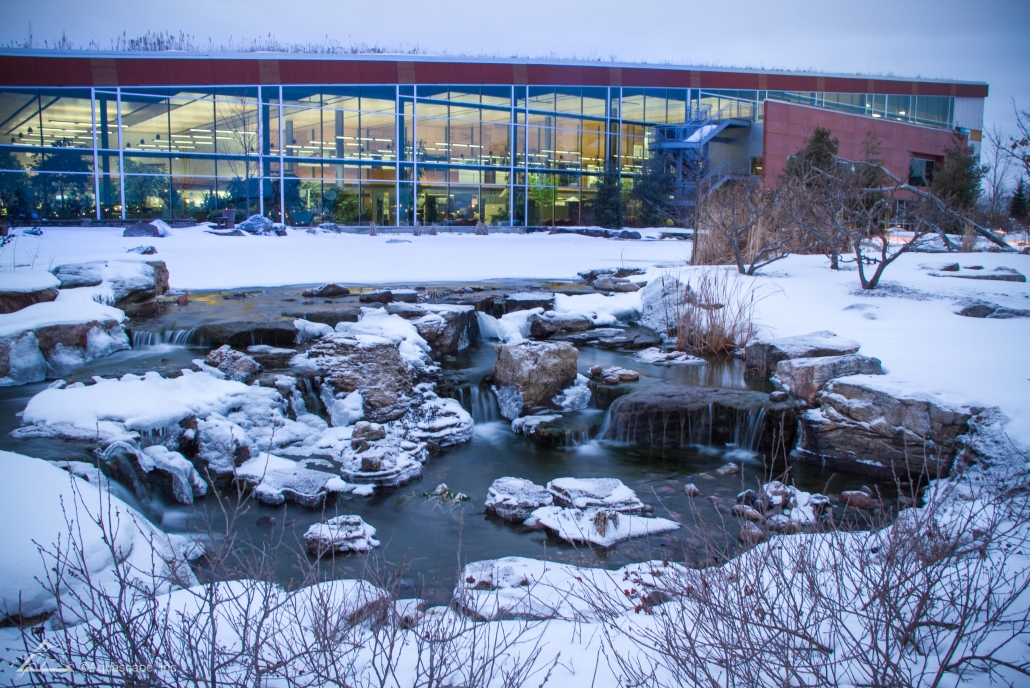
One of the ways is to provide an air hole on the surface of the water so that the fish can survive in winter. Even though the fish go into hibernation in the winter months, they still need oxygen to survive the winter season. If you turn your filters off for the winter, you’ll need to supply oxygen with a pond aerator or a small recirculating pump. Such an aerator should be ideally placed on a shelf in the pond. It will help to maintain the hole on ice while adding oxygen to the pond. Aquascape provides the best in class pond aerator kits for your garden pond.

If you live in an area where climates are colder for a longer duration of time, you may have to use a de-icer along with an aerator. This will help to maintain the hole on surface ice which allows the gases to escape from the water.
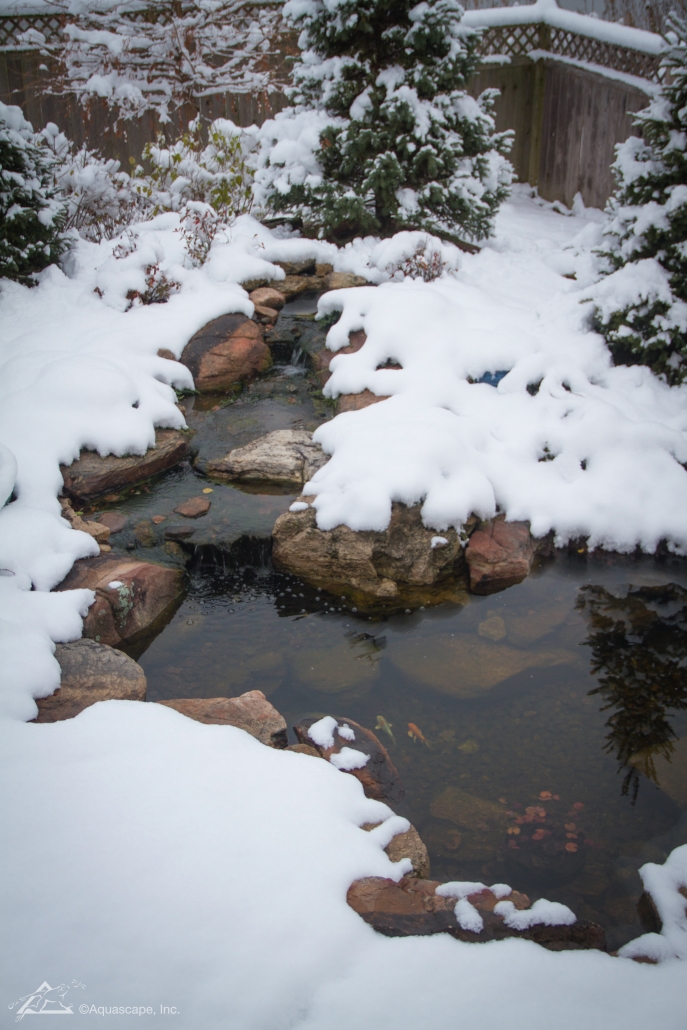
When the temperature drops below 50 degress F , the metabolism of the fish drops. Hence, it’s ideal to stop feeding the fish below this temperature as it may prove very harmful for the fish. Following the above guidelines will definitely help you in pond care in winter.
Fish Care for Garden Water Pond
The addition of fish to a garden water pond gives one a lot of enjoyment. However, it also makes the owner knowing about water maintenance of paramount importance. Although fish care for garden water pond isn’t tricky, it does adds an extra effort on your part when it comes to pond maintenance.
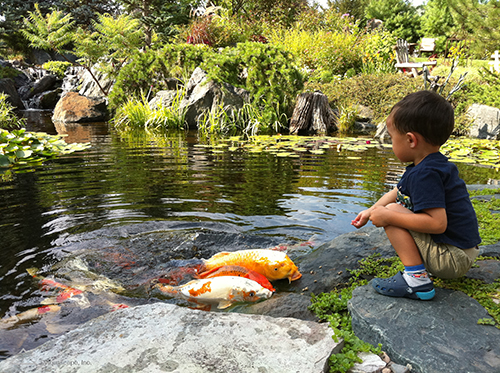
Fish require a shady location inside the pond to escape from the sun’s scorching heat and hide from birds. Adding floating plants like lilies and lotus and placing stones inside the pond can provide the fish with plenty of areas to hide. Oxygenating plants are essential if you want to add fish to your garden pond. Oxygenating plants help in removing carbon dioxide and increasing the levels of oxygen in the water.
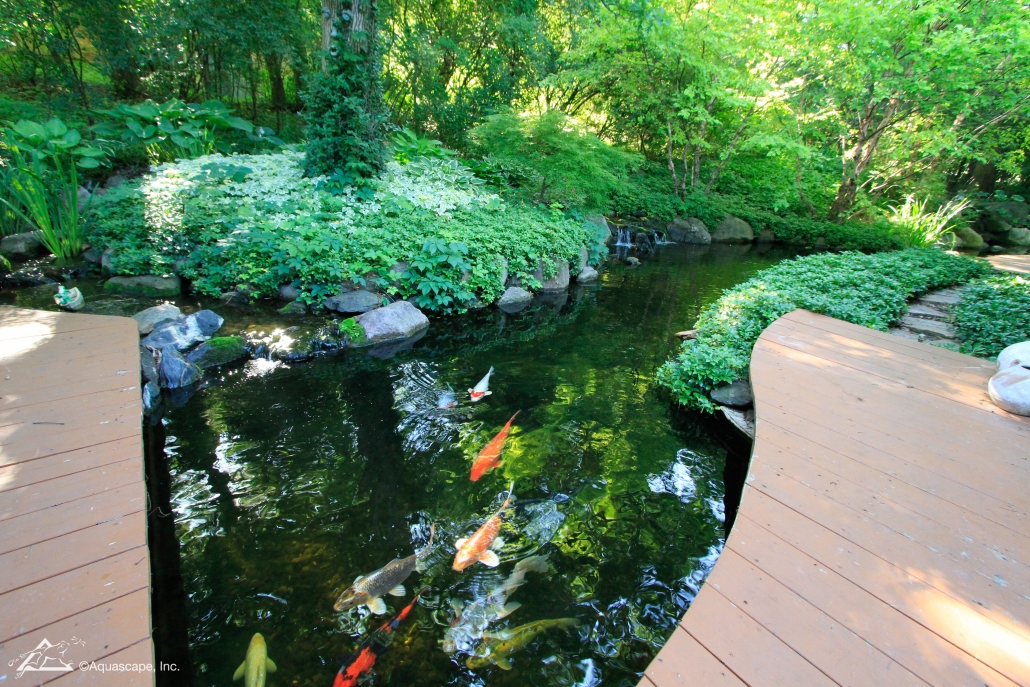
Always check and maintain proper levels of chemicals such as chlorine in the water. An excessive level of such substances can prove to be incredibly harmful to fish in the water. Herbicides, pesticides, and fertilizers used for aquatic and surrounding pond plants can harm the fish in the water. Try limiting the use of such chemicals and make sure the waste flows through the drainage properly.
Fish require clear and freshwater. To avoid stagnation, ensure that the filters and pumps are functioning correctly and water flow is maintained. It is essential for a regular check of these pumps and filters and to replace them whenever required.
In the summer, when the water temperature is above 60 degrees Fahrenheit (15 C), feed your fish a high protein food every day or every other day. When the temperature drops below 50 degrees F., discontinue feeding as the digestion of fish drops drastically in winter. Knowing this is very important for fish care for garden water pond.

Fish, like all creatures, need healthy, nutrient-rich food to thrive. Aquascape fish foods contain probiotics that aid in digestion, optimize growth rates, and reduce fish waste. Quality ingredients, including multivitamins and stabilized vitamin C, provide superior nutrition and will not break apart and cloud pond water. Aquascape fish foods are scientifically formulated to provide all pond fish, including koi and goldfish, premium quality nutrition at an affordable price.
- Floating pellets are ideal for all pond fish
- Includes stabilized multivitamin and probiotics
- Will not break apart and cloud water
- Contains high-quality protein
Things to remember for Garden Pond Maintenance
Garden ponds of all sizes need regular maintenance. Mostly they need to be looked after every week. Various factors affect the pond‘s maintenance, such as the materials from which the pond is constructed, if fishes are there in the pond, the plants surrounding the pond. Garden pond maintenance also depends on the climate, and the seasons like winter and spring will require different maintenance requirements.
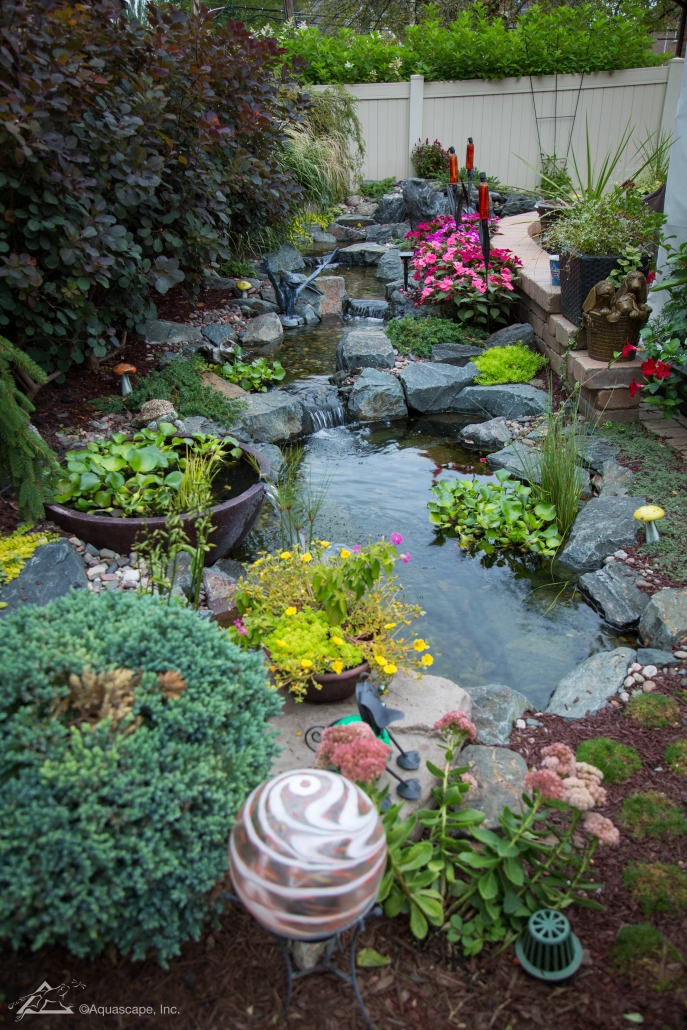
Locate and fix any patch leaks. You can use a pond repair kit for this purpose. Check regularly for any issues in garden pond machinery like pumps and filters. Replace the parts if necessary. Proper functioning of pumps is crucial for keeping the water circulating in the pond. It helps to prevent stagnation and restricts the growth of algae and mosquitoes. Pumps and filters also help in maintaining the water flow.
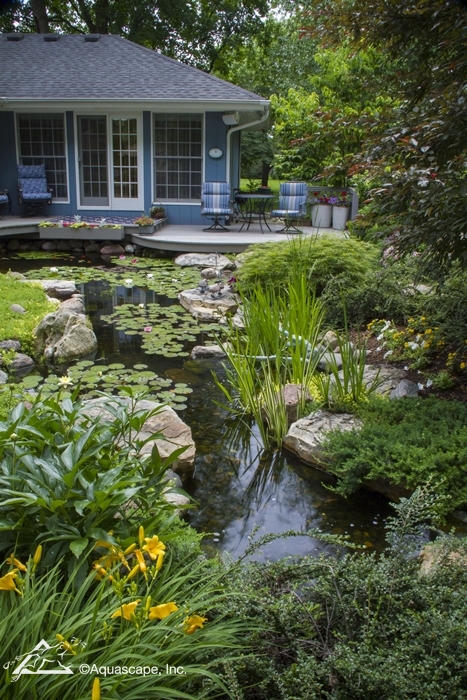
It is also advised to regularly clear the pond of any leaves and debris from surrounding plants and trees. Adding some aquatic plants can also help to increase the oxygen levels. In addition to planting floating plants, keep a check on algae growth.
Garden pond maintenance requires having a balance water level is exceptionally crucial. It helps to prevent the build-up of minerals. Also, the chemical levels of chlorine and chloramines in water should be kept in check. An excess of these chemicals may prove extremely harmful for fish and other aquatic animals in the pond.

Ensuring the health of fish in the pond is also very important. Reduce fish feeding in winter as their digestion slows down in winter months. During the winter months, move the fish to an indoor pond if the temperatures drop too much. Take care of the surrounding plants by using proper fertilizers.
